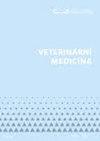越南鸡产气荚膜梭菌的特性研究
IF 0.6
4区 农林科学
Q3 VETERINARY SCIENCES
引用次数: 1
摘要
本研究的目的是从越南鸡中分离和鉴定产气荚膜梭状芽孢杆菌,并鉴定与肠炎有关的毒力因子。从健康和患病的鸡身上采集了五百三十一份粪便和六十八份肠道样本,用于产气荚膜梭菌的分离。通过多重PCR测定毒力因子的存在。对所选分离株的netB基因进行测序,并通过SDS-PAGE检查其表达。收集了272株产气荚膜梭菌分离株。所有这些都显示出cpa基因阳性。在26.56%的健康鸡产气荚膜梭菌分离株中检测到netB基因,而在患病鸡中,43.45%的粪便分离株和45%的肠道样本分离株对该基因呈阳性。来自患病鸡的所有8个对netB呈阳性的分离株在netB序列中显示出100%的同一性,并在体外产生netB毒素,而8个健康鸡衍生的分离株中只有2个产生这种毒素。实验感染产气荚膜梭菌netB阳性分离物的鸡中,十分之九表现出典型的肠炎症状。cpa基因是产气荚膜梭菌中最常见的毒力因子,但netB基因可能是导致鸡坏死性肠炎进展的主要因素。本文章由计算机程序翻译,如有差异,请以英文原文为准。
Characterisation of Clostridium perfringens isolated from chickens in Vietnam
The objective of this study was isolating and characterising Clostridium perfringens from chickens in Vietnam and identifying virulence factors involved with enteritis. Five hundred thirty-one faecal and sixty-eight intestinal samples were collected from healthy and diseased chickens for the C. perfringens isolation. The presence of virulence factors was determined by multiplex PCR. The netB gene of the selected isolates was sequenced and checked for its expression by SDS-PAGE. Two hundred seventy-two C. perfringens isolates were collected. All of them were shown to be positive for the cpa gene. The netB gene was detected in 26.56% of the C. perfringens isolates from the healthy chickens, while 43.45% of the isolates from the faeces and 45% of the isolates from the intestinal samples were positive for this gene in the diseased birds. All eight isolates positive to netB from the diseased chickens showed 100% identity in the netB sequence and produced the NetB toxin in vitro, whereas only two out of eight healthy chicken-derived isolates produced this toxin. Nine out of ten chickens experimentally infected with the C. perfringens netB-positive isolate showed typical signs of enteritis. The cpa gene was the most prevalent virulence factor identified in the bacteria C. perfringens, but the netB gene could be a major player responsible for necrotic enteritis progression in chickens.
求助全文
通过发布文献求助,成功后即可免费获取论文全文。
去求助
来源期刊

Veterinarni Medicina
Veterinary Sciences-兽医学
CiteScore
1.30
自引率
0.00%
发文量
62
审稿时长
18-36 weeks
期刊介绍:
The journal Veterinarni Medicina publishes in English original papers, short communications, critical reviews and case reports from all fields of veterinary and biomedical sciences.
 求助内容:
求助内容: 应助结果提醒方式:
应助结果提醒方式:


